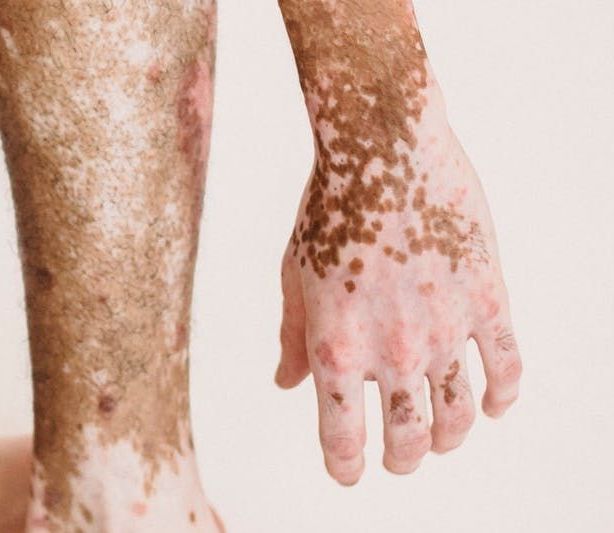Autoinflammatory, Non-Autoimmune Comorbidities More Common with Vitiligo
New data from a study on adult vitiligo patients indicates that both autoimmune/autoinflammatory and non-autoimmune comorbidities have higher occurrence rates for vitiligo patients.

Adults with vitiligo may be more likely to have autoimmune/autoinflammatory and non-autoimmune comorbidities, according to recent findings.1
The autoimmune skin disorder—characterized by targeting melanocytes and leading to in skin pigmentation loss—has a less-well known comorbidity prevalence. For this reason, this study’s investigators sought to characterize these comorbidities for those with the condition.
The study was authored by Khaled Ezzedine, MD, PhD, from the Department of Dermatology at Hôpital Henri Mondor in France.
“This disorder is associated with autoimmune/autoinflammatory and/or nonautoimmune comorbid conditions that are not well characterized,” Ezzedine and colleagues wrote. “As part of a large epidemiologic study of the prevalence of vitiligo in the United States (US), the occurrence of these comorbidities among adults with vitiligo was also planned.”
Background and Findings
For the investigators’ online, cross-sectional survey, adult study participants were chosen to represent the 2017 US Census population. The participants were classified into 1 of 3 groups depending on their response to vitiligo screening questions, namely diagnosed vitiligo, undiagnosed vitiligo, and no vitiligo.
Between December 2019 and March 2020, they were asked to report to the researchers any clinical-diagnosed health conditions from a predetermined list that included 21 non-autoimmune conditions and 13 autoimmune/autoinflammatory conditions.
The investigators found in their survey results that a total of 40,888 adults participated, of which 314 were in the vitiligo group, 249 were in the undiagnosed vitiligo group, and 40,325 were in the non-vitiligo group.
The team noted that 56.7% of those surveyed were female, with the average age of the participants being 44.9 years.
The diagnosed vitiligo participants had a 2.6 times higher prevalence of a minimum of 1 autoimmune/autoinflammatory comorbidity compared to the non-vitiligo group, and the diagnosed vitiligo participants had a higher prevalence of each of the 13 autoimmune/autoinflammatory conditions compared to the group without vitiligo.
The investigators also noted that compared to the non-vitiligo group, those with a diagnosis had a difference over 5% in the prevalence of psoriasis (8.7%), rheumatoid arthritis (7.8%), and multiple sclerosis (5.5%) and a higher percentage in 19 of the 21 non-autoimmune comorbidities.
The researchers concluded that, due to the higher prevalence of these comorbidities for vitiligo patients, these conditions should be more heavily considered during patients’ routine clinic visits.
“Multidisciplinary consultations with other specialties may be beneficial and discussed with patients,” they wrote. “Because the study relied on participant recall, future studies should be conducted to confirm vitiligo's association with these conditions using International Classification of Diseases diagnosis codes.”
References
- Ezzedine, K, Anastassopoulos, KP, Gandhi, K, Daniel, SR, Yamaguchi, Y, Sikirica, V, et al. A survey study of self-reported comorbidities among adults with vitiligo in the United States. JEADV Clin Pract. 2023; 1– 6. https://doi.org/10.1002/jvc2.111